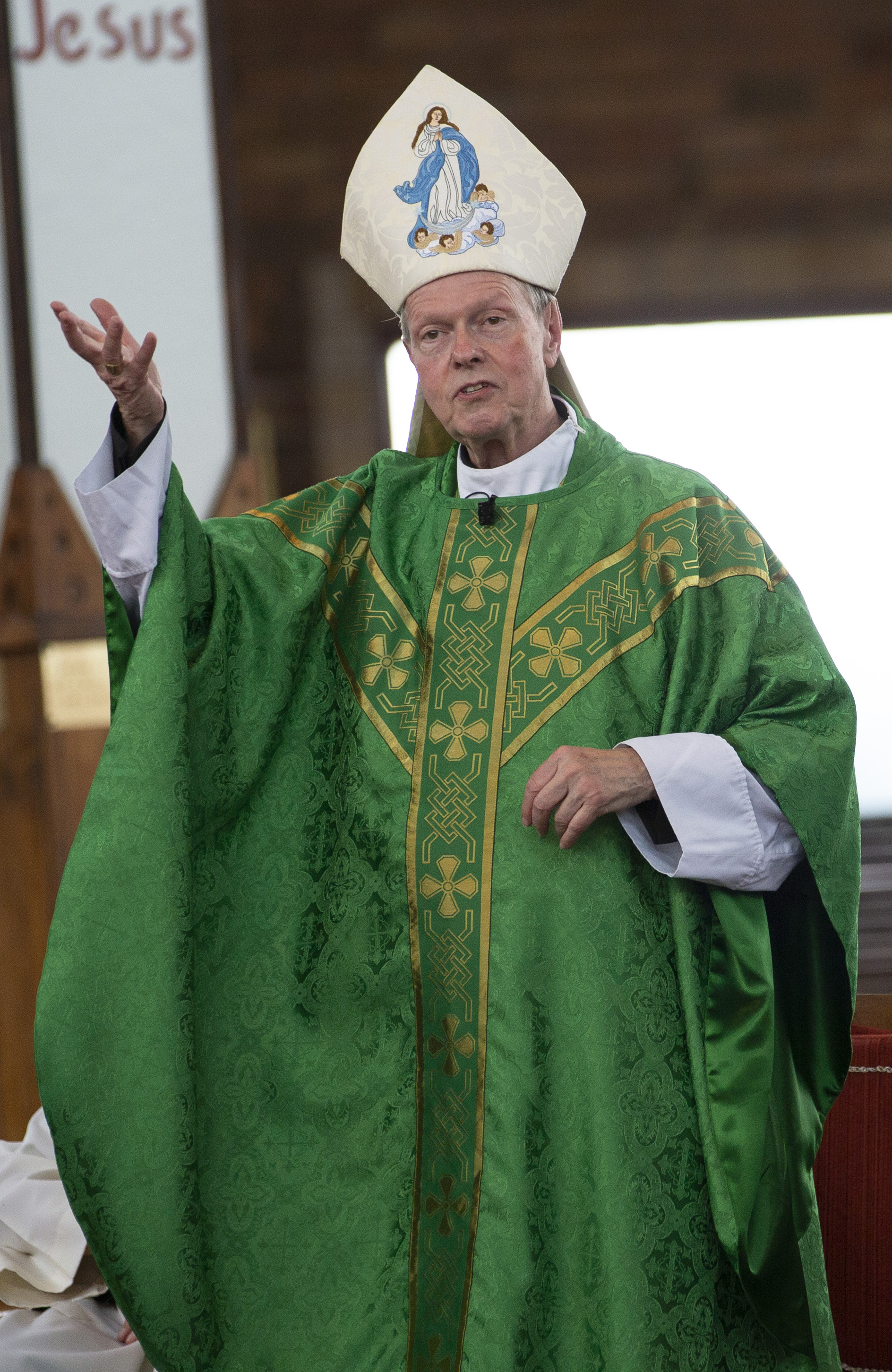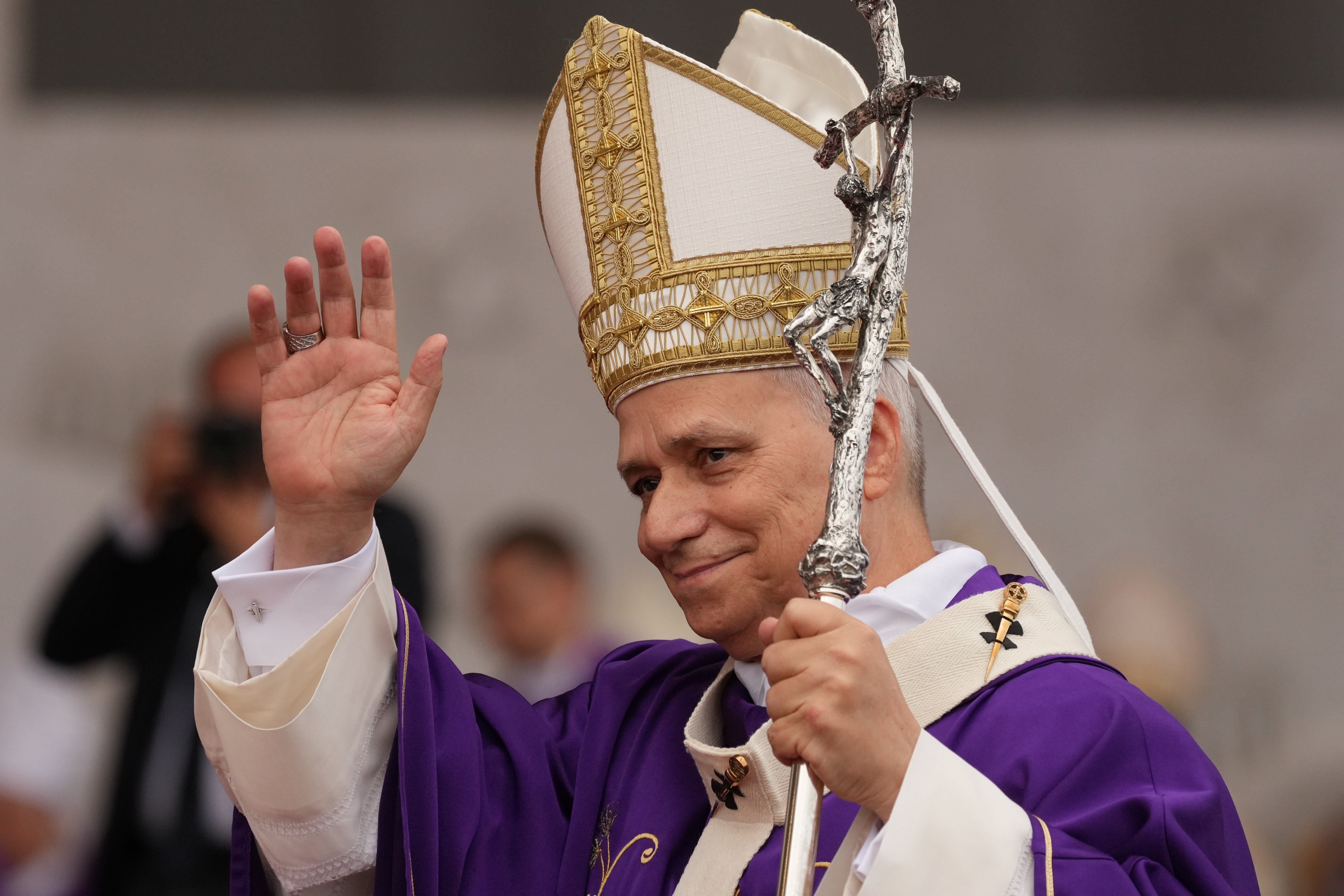July 31, 2024 at 8:37 a.m.
THE MASS AND THE EUCHARIST
This week we continue our reflections on the Mass and Eucharist by taking a closer look at what we do when celebrating Mass together. In our Gospel (John 6:24-35) Jesus is asked, “What sign can you do, that we may see and believe in you?” This question is most certainly answered in full, during the celebration of Mass. In fact, the Mass is full of signs and symbols that guide and direct us. These signs or symbols can be expressed in what we might call the three “Rs” about the Mass: it is a ritual, it is about relationships (with God, each other and our very self) and it is real (a real and dynamic encounter with God). During the celebration of Mass, we in fact use many signs to help us see and understand all that is happening and to help our belief.
Even before we begin the Mass, we encounter these signs. For example, we perform a ritual by blessing ourselves with holy water and make the sign of the cross (this is a reminder of our baptism). Hopefully, we are welcomed or greeted as we enter the church, reminding us that God has called us together as his people and his family.
As the Mass begins, we are also reminded that God is with us and that he does many things for us: we have a real encounter with the Lord. How so? The priest enters and kisses the altar, for the altar is a symbol or sign of Jesus and his sacrifice for us. (If you lift the cloth on the altar, you will see five crosses representing the five wounds of Jesus: his hands, his feet and his side.) We again make the sign of the cross reminding us of the presence of the Trinity: Father, Son and Holy Spirit. And then there is the greeting: “The Lord be with you”… for so he is!
We then prepare to celebrate this great gift of the Mass by pausing to reflect on the past week and to acknowledge our need for God’s love and mercy: after all, that is a key reason why we are here. As Pope Francis has said, the church is not a museum of saints, but a hospital for sinners! We then sing the “Glory to God,” an ancient hymn composed of many quotes from the Bible and ancient poems, that sing of our praise to God. We conclude these preparations with a special prayer said by the priest. It is officially called “the collect” because it literally collects together all that we have said and done so far during the Mass.
We then begin what we call “The Liturgy of the Word,” which is the first of the two main sections or signs present in the Mass. We sit down to listen to God’s Word. It is a real encounter with God. It truly is God speaking directly to us and that is why we say “the Word of the Lord” or the “Gospel of the Lord” at the end of these readings. God feeds us at the table of his Word. Incidentally, there is an organization regarding readings we hear: they have not been chosen at random. For example, the Old Testament reading is like a shadow or an anticipation of the Gospel reading. There is a three-year cycle to the Gospel readings, reflecting three of the four Gospel writers: Matthew, Mark and Luke.
The high point of the Liturgy of the Word is, of course, the proclamation of the Gospel. We do not just hear about, but we really do encounter Jesus, the Word of God, in the Gospel. That is why we have all sorts of signs and rituals to help us see and believe. For example, we often have a special Gospel book that is carried in solemn procession and kissed at the end of the Gospel. We sign ourselves as the Gospel is announced, so that the Lord may be in our minds (signing our forehead), and on our lips (signing our lips), and in our heart (signing our heart). The priest or deacon then breaks open the Word of God in the homily (well hopefully!). The preacher has three tasks in doing this, what might be called the three “E’s:” to explain, to explore and to earth what we have heard in our readings.
The Liturgy of the Word concludes with us reciting the Creed, or as it is sometimes called, the symbol or sign of our faith. The Creed is a summary of our faith: of who and what we believe in. We then pray as a community for the church, the world and for all in need. After all, praying is a key part or sign of being a Christian: it is nothing less than an exercise of the priestly ministry of all who are baptized.
Our focus at Mass now shifts to the altar, as we start the second main part or sign of the Mass: the “The Liturgy of the Eucharist.” First, we prepare the altar, just as we would set the table for a meal at home for, after all, the Eucharist is a “sacred meal.” Then there is another ritual as our gifts of bread and wine, as well as our contributions, are brought up in procession. This too is very much a sign or symbol. From the body of the church, the people, we offer to God the fruit of the earth and work of human hands for him to transform these gifts and to use them “for our good and the good of all His holy Church.” As with the meager offerings of five loaves and two fish in the Gospel last week, God’s power will transform our offerings into something amazing. The bread and wine will be transformed (transubstantiated) into the body, blood, soul and divinity of the Lord.
We then begin the long prayer called “the Eucharistic Prayer.” The prayer is highly structured and carefully put together and it is full of signs. In the prayer, several things happen. Praise and worship is offered to God and we pray, once again, for ourselves, for the pope and bishops and for those who have died. We also ask the prayers of those special members of the church, the saints. We ask the Holy Spirit to come down on our gifts of bread and wine and, as we recall Jesus’ words at the Last Supper — “this is my body … this is my blood” — our gifts become just that, the real presence of Jesus. Later on in the prayer, for a second time, we ask the Holy Spirit to transform us too.
Now that all this has happened, we need to prepare ourselves to receive the Lord. First, we stand and pray in the words that Jesus himself gave to us, that is the “Our Father,” We also exchange a sign of peace because we are about to enter a “holy communion;” not just as it were “vertically,” that is with Jesus, but also horizontally, that is with each other. Jesus is, of course, “the Body of Christ” (as is said as we come forward to receive), but, in another way, as St. Augustine tells us, so are we.
We also realize that we are not worthy for such a great gift as the Eucharist. This is why we sing “Lamb of God … have mercy on us” and we echo the words in the Gospel of the Roman centurion … “Lord I am not worthy that you should enter under my roof ...” (Matthew 8:8). In love and humility then, we come forward to receive the Lord. We are encouraged to bow as we come up to receive as a physical sign of devotion and reverence before Jesus, “the King of kings and Lord of lords.”
We conclude our Mass with a final prayer followed by a blessing. We are then dismissed and sent out. Note that the original meaning of our word “Mass” comes from the Latin word “missa,” which means being sent out as a messenger, or emissary or missionary. The Lord asks us to go and share what we have received with others in the week ahead: “go and announce the Gospel of the Lord” or “go in peace, glorifying the Lord by your life.” We are to be a living and real sign of the love and presence of Jesus, not just in the church building, but everywhere.
As we have seen, in the Mass, we are given many signs to help and to strengthen us. May these signs direct us to follow Jesus: for he is our guide and our destination!
Father Barratt, STL, PhD, EV, ChM, is the director of the Office of Prayer and Worship, episcopal vicar for the Hudson Valley Vicariate, a member of the Presbyteral Council & College of Consultors and pastor at Holy Trinity Parish in Hudson-Germantown — all in the Diocese of Albany — and adjunct professor at Siena College and St. Bernard’s Postgraduate School of Theology and Ministry in Albany.
- The charity of Jane Austen
- USCCB president expresses church’s solidarity with Jewish community
- Little Sisters of the Poor again appeal for protection from contraceptive rule
- Pew report reveals why some Americans, including Catholics, leave their childhood faith
- Christmas reminds faithful God can be found in the ordinary, pope says
- Increase in US executions largely driven by Florida, year-end report says
- Belarus’ Catholic Nobel laureate says his freedom is ‘truly a miracle from God’
- Christmas creche, tree are signs of hope, pope says
- Pope condemns ‘antisemitic violence,’ ‘terrorist massacre’ in Sydney
- Hong Kong’s Jimmy Lai convicted in ‘farce’ national security trial








Comments:
You must login to comment.